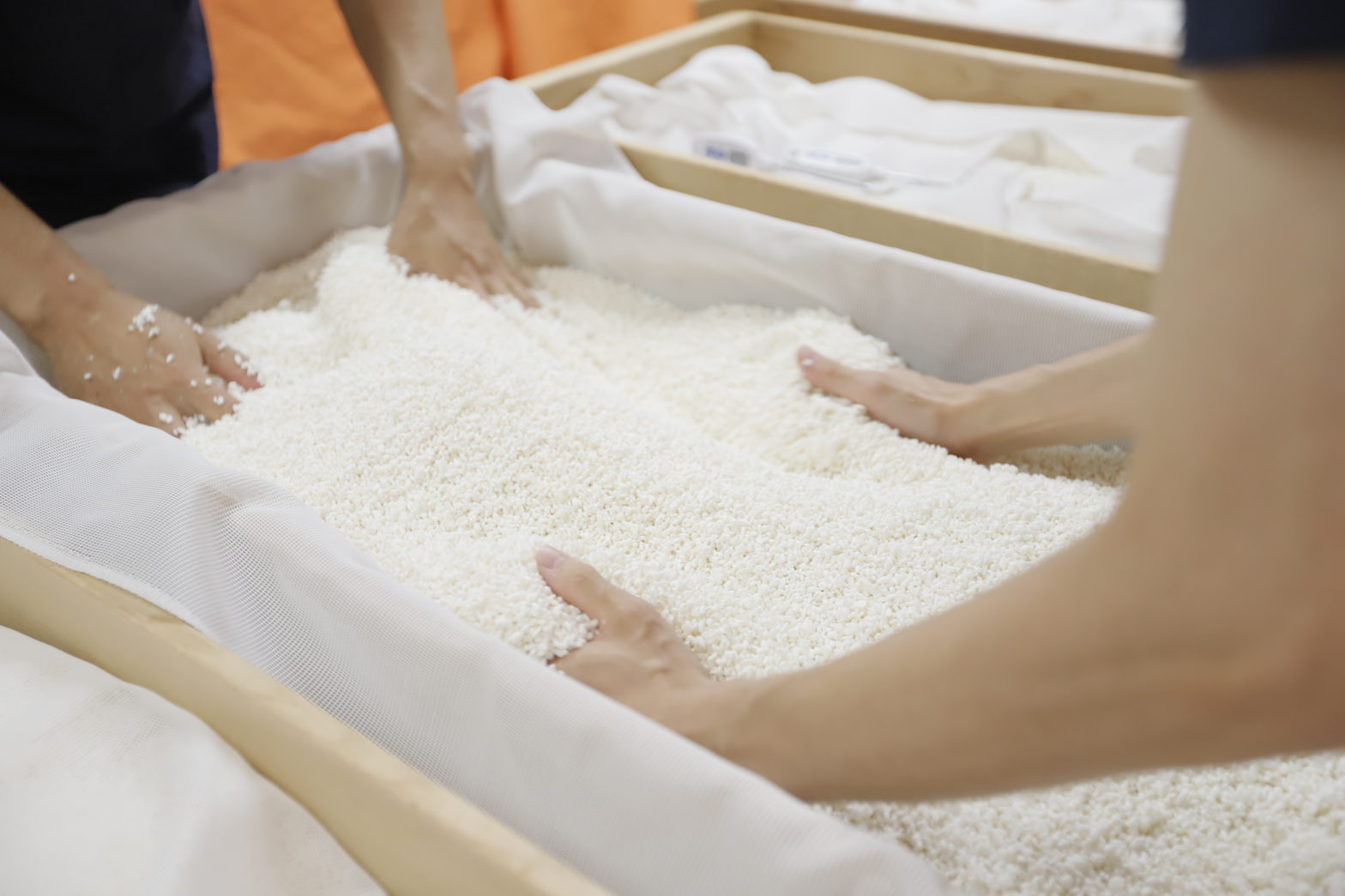In the context of sake production, koji means the steamed rice propagated with koji fungus. In the sake industry, there are three elements that are very important in determining the quality of sake: the quality of koji, the quality of the starter, and the production technique.
Koji has two main functions. Its most important role is to produce the enzyme that converts starch to glucose.
The secondary role is to provide the necessary nutrition for the yeast. Koji mainly produces glucoamylase, α-amylase, acid protease, and acid carboxypeptidase enzymes.
Normally, there are two types of enzymes. Endoenzymes (α-amylase, acid protease) cut in the middle of clusters (chains) randomly. Exoenzymes (glucoamylase, acid carboxypeptidase) cut them only at both ends.
α-amylase dissolves the single-stranded glucose chain into smaller chains of glucose clusters. Glucoamylase then cuts both ends of the cluster into a single glucose molecule, suitable for the sake yeast to start saccharification.
Protein is dissolved in a similar way: acid protease cuts the protein into peptides (amino acid clusters), then acid carboxypeptidase cuts it into amino acid molecules.
Peptides and amino acids can be both nutrition to yeast and also elements of umami.
Generally speaking, koji fungus has three types: yellow, black and white. They differ in both color and function.


For the production of sake, yellow koji fungus (Aspergillus oryzai) has a lesser ability to produce citric acid. Japanese people used to prefer sake with less acidity, but some sake breweries now use white koji to produce sake with higher acidity.
Yellow koji does not convert all of the starch to glucose, but leaves some dextrin clusters. This dextrin gives Japanese sake a round, smooth finish and is a little sweeter.

